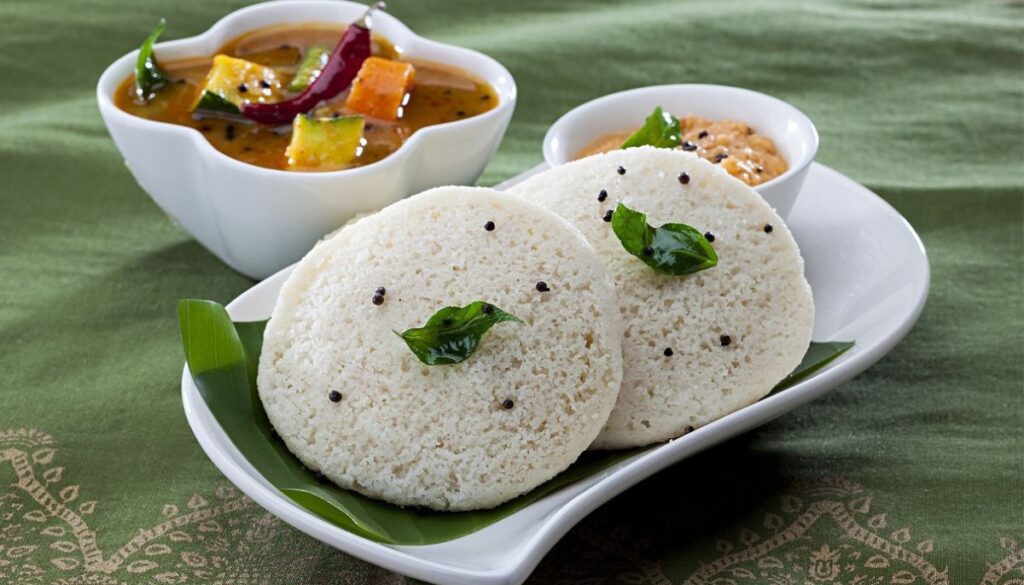Does Idli Have Protein, the beloved South Indian steamed rice cake, is a staple breakfast item enjoyed by millions. Its light, spongy texture and mild flavor make it a versatile dish that pairs well with a variety of accompaniments. However, if you’re conscious about your protein intake, you might be wondering: ? In this blog, we’ll explore the protein content of idli, its nutritional benefits, and how it fits into a balanced diet.

Understanding the Ingredients
To understand the protein content of idli, it’s essential to first look at its primary ingredients:
Rice: The base ingredient in idli, rice, is low in protein. A typical serving of plain cooked rice contains about 2-3 grams of protein per cup.
Urad Dal (Black Gram Split): This legume is richer in protein compared to rice. Urad dal provides approximately 25 grams of protein per 100 grams. It’s a key ingredient in the idli batter, contributing significantly to the overall protein content.
Protein Content in Idli
The protein content in an idli can vary based on the specific recipe and proportions used, but here is a general breakdown:
Traditional Idli: One medium-sized idli (about 40 grams) typically contains around 2-3 grams of protein. This is a combination of the rice and urad dal used in the batter.
Protein-Rich Variations: Some recipes may incorporate additional ingredients such as flaxseeds or protein-rich grains, which can boost the protein content.
Nutritional Benefits of Idli
Low in Calories: Idlis are relatively low in calories, making them a great option for those watching their weight.
Good Source of Carbohydrates: They provide a steady release of energy due to their carbohydrate content.
Rich in Fermented Benefits: The fermentation process of idli batter enhances its probiotic content, which can aid in digestion and promote gut health.
How to Increase Protein in Idli
If you’re aiming to boost the protein content of your idli meal, consider the following tips:
Add Seeds and Nuts: Incorporating seeds like chia or flaxseeds into the batter can enhance the protein content.
Pair with Protein-Rich Sides: Serve idli with sambar (a lentil-based stew) or chutneys made from nuts to increase your overall protein intake.
Opt for High-Protein Varieties: Some variations of idli, such as those made with a higher proportion of urad dal or added protein sources, can be more protein-dense.
Conclusion
In summary, while idli does contain some protein, its amount is relatively modest compared to other protein sources. The inclusion of urad dal in the batter ensures a higher protein content compared to plain rice alone. You can enjoy a more balanced meal that supports your nutritional goals by making a few adjustments to your idli recipe or pairing it with protein-rich accompaniments.
If you’re interested in exploring more delicious and nutritious recipes, be sure to check out KhazanaRecipe. Our platform offers a variety of healthy recipes and tips to help you maintain a balanced diet while enjoying your favorite dishes.

0 Comments